#Oberlin College Libraries
Explore tagged Tumblr posts
Text
via Gridllr.com — making Likes beautiful again!

Billy in the Darbies: A Facsimile from the Manuscript of Herman Melville's 'Billy Budd, Sailor', [plate 4], Edited by Dennis Marnon, The Houghton Library, Cambridge, MA, 1991 [From the Collection of William Palmer Johnston. The Grolier Club, New York, NY]
Exhibitions: Melville's Billy Budd at 100, The Grolier Club, September 12 – November 9, 2024; Oberlin College & Conservatory Libraries, Oberlin, OH, November 17 – December 20, 2024
#graphic design#manuscript#book#herman melville#dennis marnon#houghton library#collection of william palmer johnston#the grolier club#oberlin college libraries#oberlin conservatory library#1920s#1960s#1990s#2010s#2020s#Billy#Darbies#Facsimile#Manuscript#Herman Melville’s#Billy Budd
15 notes
·
View notes
Text
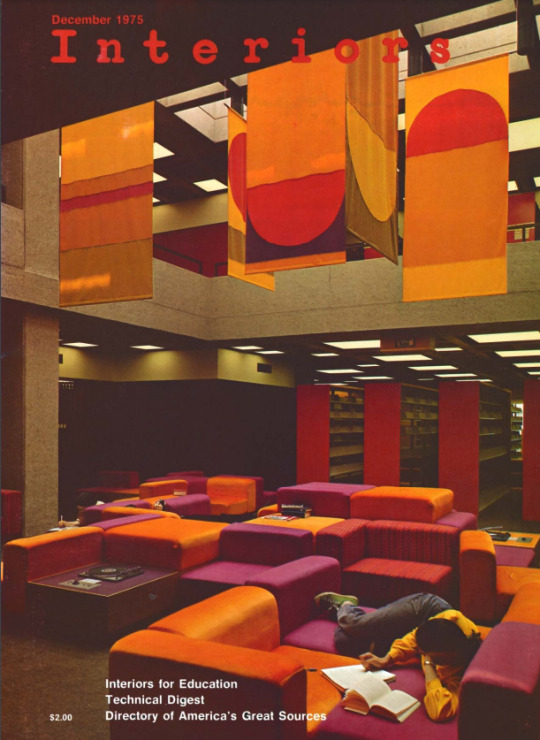
Mudd Library, Oberlin College. Ohio, US. Warner, Burns, Toan and Lunde.
1K notes
·
View notes
Text


Tens of thousands of people visit Bank of America stadium to watch the Carolina Panthers play football each year – never realizing they are walking on top of lost remnants of a once-thriving Black neighborhood established in the aftermath of the Civil War.
The stadium itself is built directly atop a relic of segregated healthcare: Good Samaritan Hospital, the first private hospital built in North Carolina to serve Black patients. Built in 1891, this historic hospital was one of the oldest of its kind in the United States.
It was also the site of one of the “most horrific racial incidents in Charlotte's history,” according to Dan Aldridge, professor of History and Africana Studies at Davidson College.
A mob of 30 to 35 armed, white men invaded the hospital, dragging a man out of the hospital and into the streets – and shooting him dead in front of the building.
The concept of “urban renewal” destroyed Black neighborhoods, communities, businesses and homes all across North Carolina, especially between 1949 and 1974.
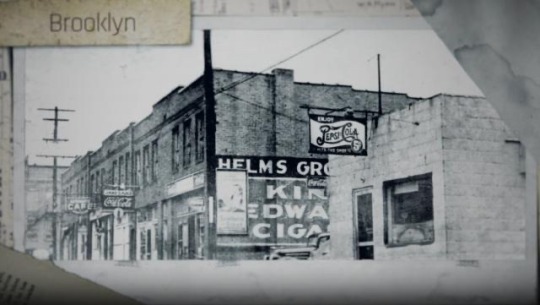
Durham, for example, once had a prominent Black Wall Street, where Black businesses flourished; however, the historic community was almost completely destroyed by construction of the Durham Freeway.
Likewise, Raleigh once had 13 historic Freedmen's Villages, built entirely by men and women freed from slavery in the aftermath of emancipation. Today, only two are remaining, and Oberlin Village, the largest one, was cut in half by the construction of Wade Avenue.
Similarly, Charlotte's Brooklyn community was built by men and women freed from slavery in the late 1800s. Like many Black communities around the state, it was forced into an awful geographical location – on low-lying land where flooding, sewage and sanitation issues made life hazardous.
According to history in the Charlotte Library, the Brooklyn area was first identified on maps as ‘Logtown’ in the late 1800s – a name that matches closely with titles given to similar freedmen villages in the Triangle area, which were often called slang names like ‘Slabtown’ or ‘Save Rent’ due to their inexpensive homes.
In the 1900s, the area became known as Brooklyn, “a name that would become synonymous with the Black community until urban renewal.”
“It's a tragedy that so many stadiums were built on sites that were once Black communities,” said Aldridge. “They're poor neighborhoods. They're struggling neighborhoods. I won't romanticize them by claiming they're all like Black Wall Street, but they were people's homes and people's communities, and they were taken from them.”
Many historically significant Black sites were lost in urban renewal; likewise, many Black communities were forced to build in geographically unfit areas, making growing wealth and property more difficult – and more easily lost over time.
At its peak, Brooklyn was home to:
Charlotte's first Black public school
Charlotte's only Black high school
The city's first free library for Black patrons
The first companies to offer white collar jobs to Black workers
The first private hospital for Black citizens in Charlotte
Today, football players run up and down the Bank of America field for the amusement of thousands of cheering fans. However, in 1913, over a century ago, that same land had a very different story.
(continue reading) related ↵ related ↵
#politics#urban renewal#structural racism#carolina panthers#bank of america#bank of america stadium#panthers stadium#good samaritan hospital#black wall street#blacklivesmatter#racism#erasure#displacement#north carolina#systemic racism#brooklyn nc#brooklyn north carolina#black history#football#nfl#nfl football#whitewashing history
111 notes
·
View notes
Text

Virginia Proctor Powell Florence (October 1, 1897 – April 3, 1991) was a trailblazer in both African American history and the history of librarianship. She became the first African American woman to earn a BS in library science. This made her the second African American to be formally trained in librarianship.
After moving to Pittsburgh, she graduated from Pittsburgh’s Fifth Avenue High School in 1915. She followed in her mother’s footsteps and continued her education at Oberlin College. She moved back to Pittsburgh where, although having adequate training and experience, she was unable to pursue her desired goal of teaching and spent some time working at her aunt’s salon as a beautician. Aware of her passion for children and books, Charles Wilbur Florence, her future husband, encouraged her to pursue a career in librarianship.
During a time when African Americans were rarely considered for admission into predominantly white universities, she was considered for admission into the Pittsburgh Carnegie Library School. There was much debate about allowing an African American person into the program. School officials were concerned with how white students might react to having an African American peer and the likelihood that she would find work upon completion of the program was slim. No library in the Pittsburgh area had ever hired an African American person with the amount of formal training she would have after graduation. After deliberation, school officials decided to admit her based on her previous academic achievement at Oberlin College. Although the school had accepted her, she still had to face discrimination. She was not allowed to interact directly with the white patrons; she was instructed to allow a white patron to answer any questions patrons would have. #africanhistory365 #africanexcellence
2 notes
·
View notes
Text
i was in THE MIDDLE of putting together my cover letter and resume for a position in the OBERLIN COLLEGE AND CONSERVATORY LIBRARY and my ipad imploded 😐🔫
#IT PAYS SO GOOD? REQUIRES ALMOST NO SPECIFIC EXPERIENCE OF ANY KIND?#oberlin is kind of far from jake but the pay is so good i could probably get my own place way faster#t
4 notes
·
View notes
Text
i linked to the paper these screenshots are from in the post but just some quotes;
"Much of the archaeological “loot” that was divided amongst the Committee sponsors ended up overseas. Some 160 mosaics went to the United States, whereas only a dozen or so went to Paris. The mosaics that arrived in the United States are today distributed amongst museums and academic institutions. [...] Most recently the mosaic of the sea goddess Tethys, from the Antiochen bath F, was sold by Dumbarton Oaks to the Harvard Business School"
+ "Thus, the Worcester Museum without any apparent reason dismembered the panels from the corridor of the Aion House (selling three of the seven to the Allen Memorial Art Museum of Oberlin College in Ohio) and sold off to the J. Paul Getty Museum all five of the panels coming from the vestibule of the little Bath of Apolausis, dated around 400 A.D."
+ "The last case to be remarked in this brief review of atrocities is that of the martyrion of St. Babilas. Situated close to the inhabited centre of the city of Antioch, the remains of this building were excavated in the spring of 1935. This case reveals yet another aspect of the fate of the mosaics of Antioch and its environs. There is no record as to what happened to the hundreds of square meters of mosaic that were uncovered by excavation, but then left to their destiny. Amongst these figure the mosaics of the enormous cruciform martyrion. In view of their extraordinary documentary importance, they ought to have been preserved in situ. Alas, as things now stand, only a few scrappy remains in opus sectile and four dedicatory inscriptions carrying the date of 387 survive today, and these are to be found two in the Hatay Archaeological Museum of Antioch, at the Dumbarton Oaks Research Library and Collections in Washington, and at Princeton University. Poignant in this respect are the regrets expressed by Jean Lassus, French archaeologist who served as assistant field director, about the necessity to dismember a number the pavements in order to excerpt inscriptions and extract figural panel from an expanse or geometric or floral backround! Although the former Sanjak of Alexandretta was formally ceded to the Republic of Turkey in 1938 and the commencement of the hostilities of the Second World War brought archaeological investigation to a rapid close, it is extremely surprising that there has been no systematic attempt to resume work at Antioch since then. It is quite likely that with the passage of time and thanks to the general neglect the mosaics that did remain in situ fell victim to the urban expansion of the modern city. Nevertheless, Antioch was one of the most important metropoleis of the ancient and medieval Mediterranean, and its material culture demands justice."
the way excavated houses in antioch were taken apart is uhm. well just look


sometimes even just single mosaics sliced up

#like lmao what does the business school need that for fdshf.#really the paper is worth reading. it's not long. says some interesting things about the way the context of the mosaics was removed too
117 notes
·
View notes
Photo
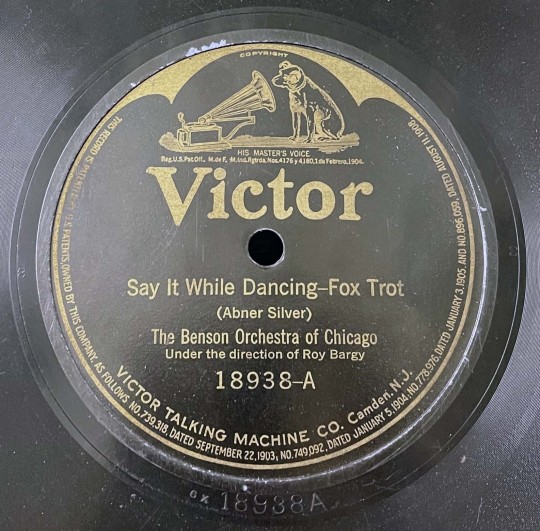

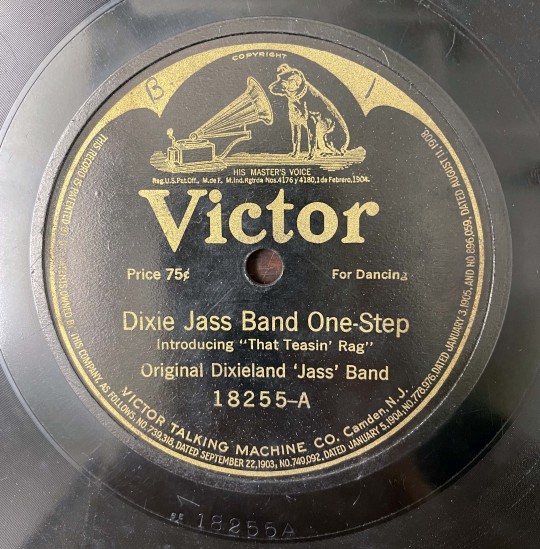

New Year, New (Old) Sounds in the Public Domain!
On January 1st, 2022, all sound recordings made before 1923 entered the public domain, an estimated 400,000 sound recordings that document the beginning of recording technologies and include a rich variety of musical styles, such as vaudeville, ragtime, and early jazz. Some notable examples highlighted by the Association for Recorded Sound Collections are “Crazy Blues,” performed by Mamie Smith and her Jazz Hounds in 1920, and a 1917 recording of “Dixieland Jass Band One-Step” by the Original Dixieland Jass Band. The 78 rpm records seen here are part of the Oberlin Conservatory Library’s James R. and Susan Neumann Jazz Collection, and the sheet music is part of the Stanley King Jazz Collection.
Learn more about the Music Modernization Act, passed by Congress in 2018, that allows these recordings to enter the public domain. Listen to pre-1923 sound recordings available at The Public Domain Review, the Internet Archive, and the National Jukebox at the Library of Congress. And lastly, join the virtual party for Public Domain Day on January 20th: A Celebration of Sound. Cheers!
#Oberlin#Oberlin College#oberlin college libraries#oberlin conservatory#conservatory library#public domain#jazz#neumann jazz#music history#Music Monday
88 notes
·
View notes
Photo
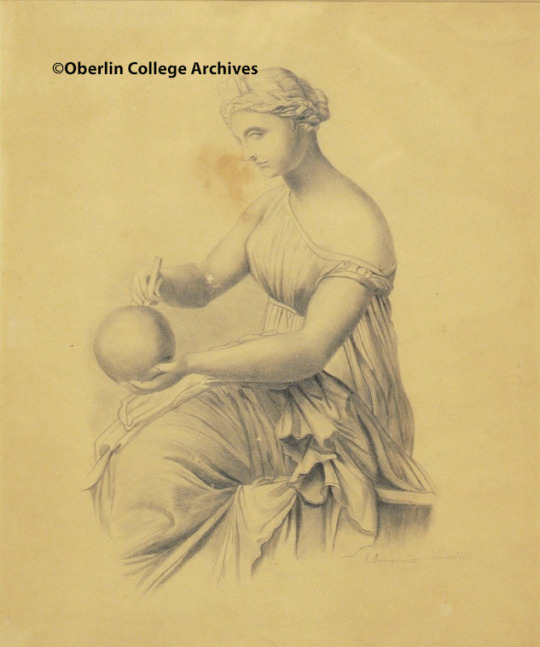
Edmonia Lewis and Oberlin College
The United States Postal Service has announced that artist and sculptor Edmonia Lewis will be featured on a Forever Stamp, the 45th stamp in their Black Heritage series. The stamps will be dedicated and go on sale on January 26, 2022.
Edmonia Lewis was born in New York or Ohio in 1843 or 1845 to a free Black father and Native American mother. Also known as Mary Edmonia Lewis, not much is known about her early life. Lewis attended the Oberlin Preparatory Department from 1859-1860, and the Literary Department (women’s course) from 1860-1862. Unfortunately, Lewis was accused of poisoning two of her white classmates with wine in 1862 (see “Spiced Wine” by Geoffrey Blodgett, Oberlin Alumni Magazine, February 1970). The case was later dropped after being represented by John Mercer Langston. Later, in February of 1863, she was accused of (later acquitted) stealing paint brushes and paints from an art teacher in Oberlin. Because of the incidents that Lewis was involved in, she was no longer allowed to continue in the women’s course and subsequently left Oberlin for Boston where she started a career as a sculptor. Lewis sculpted noted abolitionists, and is well known for using Italian style to depict Native American subjects.
The College Archives does not hold a personal paper collection for Edmonia Lewis, but we do have a pencil drawing, pictured above, located in our Paintings, Prints, and Drawings collection. This drawing was done by Lewis for Clara Steele Norton (Oberlin College A.B. 1862) upon her announcement to be married to Judson Cross (enr. 1855-1862). This drawing is sometimes referred to as A Wedding Gift or Untitled Drawing of Urania. (See “A Wedding Gift of 1862″ by Marcia Goldberg and William E. Bigglestone, Oberlin Alumni Magazine, June/July 1977).
We also have a variety of articles and other secondary sources on Edmonia Lewis. Please contact the College Archives if you would like to know more about Edmonia Lewis and her fascinating artistic legacy.
#Oberlin#Oberlin College#Oberlin College Archives#Oberlin College Libraries#Edmonia Lewis#Urania#Archives
55 notes
·
View notes
Text


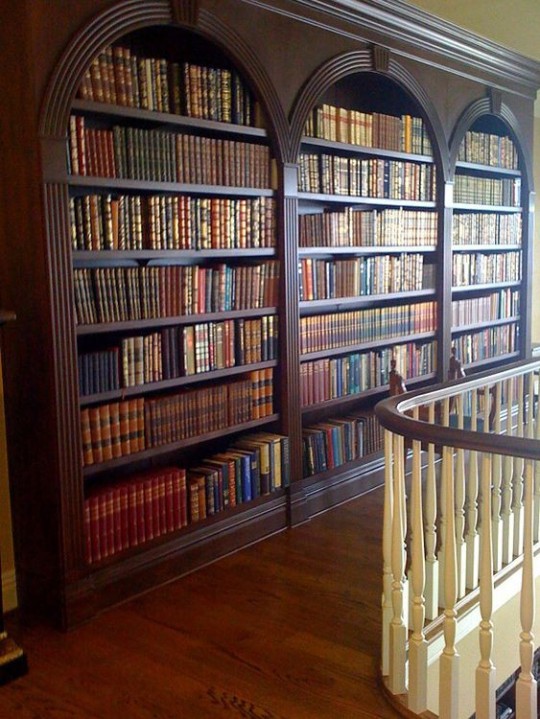
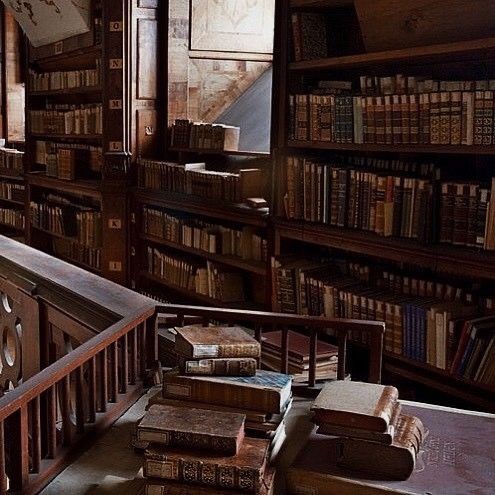



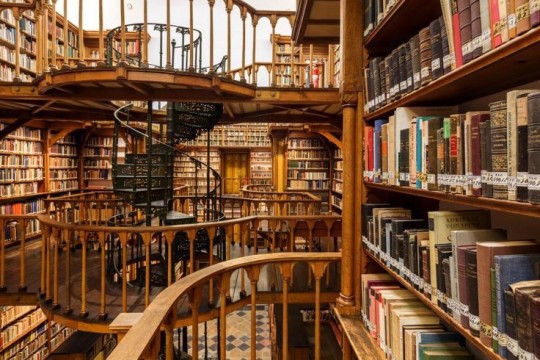
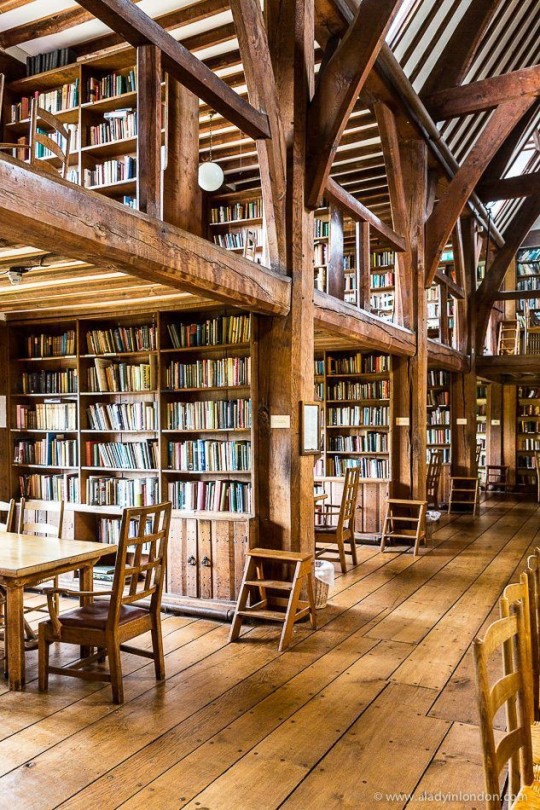
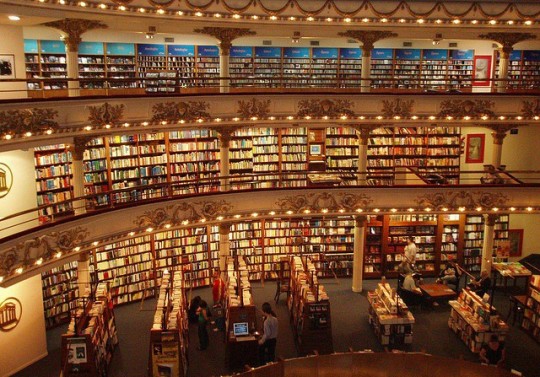
#dark academic aesthetic#dark acadamia aesthetic#aesthetic#brown aesthetic#brown academia#aestethic#dark academia#dark aesthetic#aestheitcs#libraries are wonderful#and libraries image#academic libraries#public libraries#libraries#oberlin college libraries#i miss libraries#i love libraries#librariesrock#booklover#book#bookblr#books#bookworm#bookaholic#bookish
98 notes
·
View notes
Text
via Gridllr.com — making Likes beautiful again!

Herman Melville, (1924, 1962, 2017), Billy Budd, and Other Prose Pieces, Edited by Raymond Weaver, Constable and Company Ltd., London, 1924, Volume 13 of The Works of Herman Melville Standard Edition [From the Collection of William Palmer Johnston. The Grolier Club, New York, NY]
Exhibitions: Melville's Billy Budd at 100, The Grolier Club, September 12 – November 9, 2024; Oberlin College & Conservatory Libraries, Oberlin, OH, November 17 – December 20, 2024
#graphic design#typography#exhibition#book#herman melville#raymond weaver#constable and company ltd.#collection of william palmer johnston#the grolier club#oberlin college libraries#oberlin conservatory library#1920s#1960s#2010s#2020s#Herman Melville#1924#1962#2017#Billy Budd#Other Prose Pieces
12 notes
·
View notes
Text
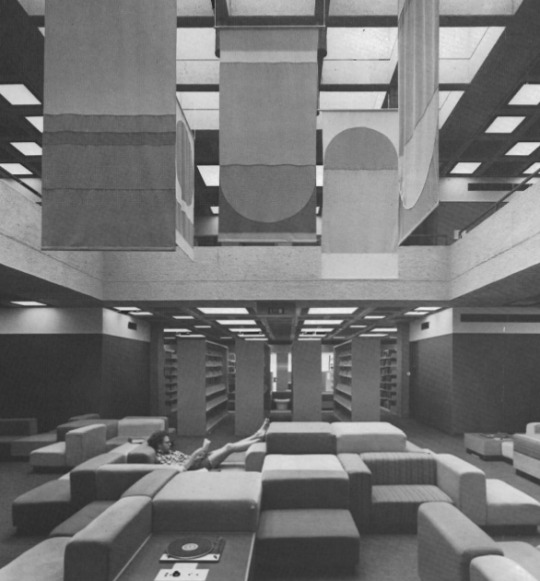
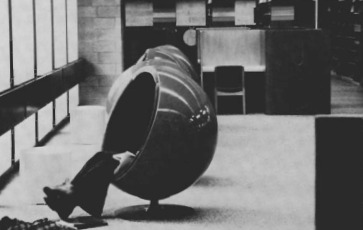

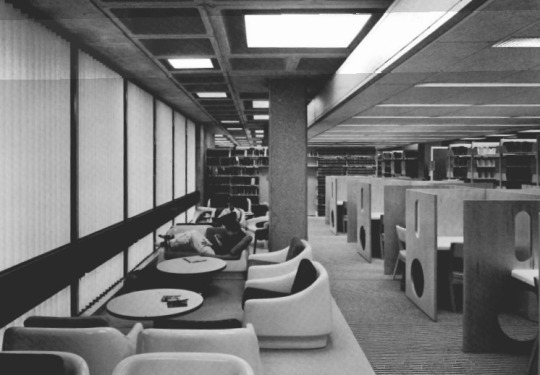

Mudd Library, Oberlin College. Warner, Burns, Toan & Lunde.
#brutalism#brutalist#architecture#interior#interiors#design#oberlin#college#university#ohio#library#mudd#eero aarnio#chair#ball#bubble
319 notes
·
View notes
Text
Our Last Post - but this is not goodbye!

Just a few parting shots from the Science Library.
Above, a portion of a book display for Black History Month, “Celebrating Black achievement in science, and highlighting the need to continue to diversify STEM education and disciplines.”
Below, new journal issues continue to be received in print - not as many as were received just a year ago, for sure, as we rely on online access. But plenty of good reading here!

Books on the popular science reading shelves, seen below, beckon! Winter Term is a fine time to read beyond the syllabus and explore new ideas.

Look for future posts from the Science Library on the various social media channels of Oberlin College Libraries: Instagram, Twitter, and Facebook, and the Libraries news feed.
Thanks for checking in - we hope to see you in the library soon!
#oberlin college#oberlin college libraries#science library#popular science books#blacks in science#scientific publications
5 notes
·
View notes
Link
Cool Virtual Escape Room.
#the darkling#darklina#team darkling#ben barnes#the grisha series#grishaverse#grisha#shadow and bone#escape room#library program#oberlin college libraries#mal oretsev#alina x aleksander#alina starkov#mal and alina#sab spoilers#alexander morozova#aleksander morozova#sankta alina#the starless saint#leigh bardugo#the lives of saints#six of crows#ruin and rising#tatiana lantsov#vasily lantsov#genya safin#siege and storm#rule of wolves#king of scars
4 notes
·
View notes
Text

Mayor Adrian Malik Fenty (December 6, 1970) to Philip and Jan Fenty in DC. His parents were both runners and they owned the athletic shoe store Fleet Feet in DC. He graduated from Woodrow Wilson Senior High School. While attending Oberlin College, he gained his first political experience as an intern for Ohio Senator Howard Metzenbaum. He interned for Representative Joseph P. Kennedy II, and delegate Eleanor Holmes Norton.
He graduated from Oberlin with a BA in English and Economics. He entered Howard University Law School, earning a JD. He worked for two years as the lead attorney and counsel for the District of Columbia Committee on Education, Libraries, and Recreation. He became involved in combating crime when he served as president of the 16th Street Neighborhood Association.
He married Michelle Cross (1997), a global technology attorney. They have two sons. In 1999, he was elected to the DC City Council representing Ward Four. He continued his crusade against crime by advocating increased policing in high-crime neighborhoods. He helped craft programs that created new jobs for his constituents who were among the poorest and he shored up funding for the construction and modernization of more than a dozen schools and recreational centers in his district.
His success on the city council translated into a huge mayoral victory in 2006. He was the youngest mayor in DC’s history. He continued with his educational reforms including a controversial one where he placed the DC school system under the authority of his office.
He focused on hiring qualified teachers to promote his education reform initiative, hiring more police officers to curb crime, and expanding health care coverage to the uninsured. His administration instituted a CapStat accountability program to monitor the performance of the local government agencies. He lost his reelection bid.
He is passionate about long-distance running and continues to participate in triathlons. #africanhistory365 #africanexcellence #kappaalphapsi
0 notes
Photo

Ben interviews himself about himself.
Lightworks Magazine no. 14/15 1981/82,
Ben Vautier, sometimes known simply as “Ben,” is a French artist of Italian origin. His work is associated with conceptual art and anti-art, and typically critiques egotism in artists, particularly a desire for personal fame and the importance of their art. His ironic commentary often features himself as the egotistical artist.

Vautier, about The Birds: 1991-2015:
Braque and Picasso painted birds. I do not see why I should not have a bird period myself. Besides, I see birds everywhere, even in a casserole.
From Ben Vautier: Is everything art? [N6853 .V38 A4 2015]
Ben has long been influenced by the work of artists Marcel Duchamp and John Cage, and was a part of the Fluxus international art community. Fluxus artists created ephemeral works – in part to disrupt the commodification of art – and experimented with chance and indeterminacy in their works. The held “Flux Fests,” to showcase their interactive, often performative work. Ben orchestrated and performed many pieces in these festivals.

From “The lunatics are on the loose...” European Fluxus Festivals 1962-1977 [N6494 .F55 L86 2012]
In addition to performance pieces, Ben has made mail art, sculpture, paintings, and incorporates writing into his art. He also “appropriates” objects; thereby turning them into works of art.
One of Vautier’s appropriated objects can be found in the art library. Flux missing card deck consists of a deck of cards from which Ben has removed the ace of spades. Art Library, Limited Access [Micro N7433.4 .V38 F56 1966]

#oberlin#oberlin college#oberlin college libraries#art library#ben vautier#fluxus#conceptual art#lightworks magazine#mail art
5 notes
·
View notes
